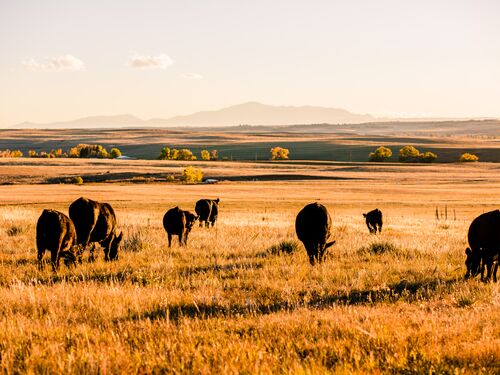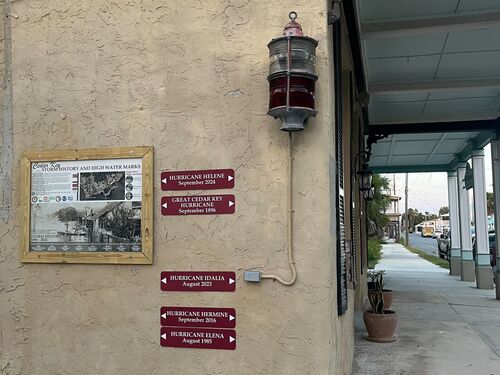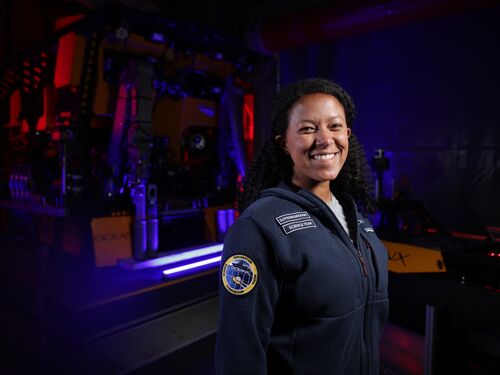Native Seeds: The Roots of Thriving Ecosystems
Program News
By Lauren Kalinosky
Last update May 27, 2025
For many gardeners, the true value of native seeds becomes undeniable when they see the powerful impact on a local ecosystem. Their own personal garden becomes a hub for insects, birds, and bees to thrive. For Kay Havens, a scientist at the Chicago Botanic Garden, and a self- described “lifelong plant nerd,” her passion for native plants came with a realization: protecting the butterflies, birds, and other wildlife she loved required creating healthy, resilient habitats for them. And native species were the answer.
Similarly, Carol Capobianco’s native seed journey began when she joined her local Audobon chapter and learned how specific native plants could attract more birds to her garden. This discovery shifted Capobianco’s identify from a casual gardener to a “bird gardener.” Today, she serves as the Director of The Native Plant Center at SUNY Westchester Community College, and her thriving native garden serves as the backdrop for her virtual meetings, an invitation for others to consider wildlife-friendly gardening in their own spaces.
Havens and Capobianco shared their stories during a Climate Conversation with the National Academies, moderated by UC Davis Professor Susan Harrison. The panel had a rich conversation on the state of the native seed supply and their important role in ecological restoration while also drawing attention to a 2023 consensus study report, An Assessment of Native Seed Needs and the Capacity for Their Supply.
The Role of Native Seeds
Native plant materials, which includes seeds, cuttings, and container stock, grow naturally in a specific region and have evolved to survive in the unique climate, soil, and ecological conditions. Native seeds are like the “Swiss army knife” of the plant world: “they provide wildlife habitat, sustain biodiversity, protect water quality, help mitigate climate change, offer natural beauty, and also define local identity,” noted Capobianco. These plants are crucial not only for the ecological health of the habitat, but also for maintaining the unique character of local landscapes. As native plant enthusiast “Lady Bird” Johnson once said, “Wherever I go in America, I like it when the land speaks its own language in its own regional accent.”
By contrast, invasive plants are non-native species that have been introduced by humans into a new region and can outcompete local species. Their unchecked spread disrupts the balance of the ecosystem and diminishes biodiversity. However, this can be undone by intentionally focusing on ecological restoration, which as Havens explains, often includes the use of native seeds to assist in the recovery of ecosystems.
However, climate change has begun to shift the goalpost. Native seeds once were strictly defined by a specific place but now might need to be viewed in the context of natural range shifts. Yet, as Havens pointed out, “local isn’t really local anymore.” For instance, Chicago’s climate now more closely resembles that of St. Louis’, prompting the idea that seeds from regions with similar climates may be more suitable. This raises some important questions about how we approach restoration and what it means for ecosystems to adapt to climate change.
Tensions between Native Seed Supply & Demand
These ecological shifts are taking place against a backdrop of a supply chain challenge. In fact, the western United States, with their vast federal lands and frequent wildfires, are among the largest consumers of native seeds for restoration purposes. However, the current supply chain for native seeds faces several obstacles.
First, seed production is a slow process, taking years to cultivate. It can be hard to predict which species will be needed, when, and in what volume. Due to these challenges, many growers see investing in native seed production as a risky venture, since there is a certain unpredictability of demand for specific seed varieties.
Second, seeds are alive and perishable, and despite efforts to extend shelf-life through careful storage in cold, dry environments, there is only so much time before the seeds lose their viability. This short shelf-life, combined with the unpredictable demand, creates a bottleneck in the restoration pipeline.
Taking Action
To stabilize the native seed market, experts argue for more strategic coordination at the federal agency level. “Forward contracting may be a way to help share that risk, with the [federal] agency investing in that long development process,” Havens suggested. This would allow agencies to commit to purchase certain seeds in advance, and enable growers to plan ahead with more confidence, ensuring that the right species can be supplied when needed.
While larger systemic issues to the supply chain remain, there is growing recognition that individuals and local communities can also play an important role in supporting the native seed supply. In fact, regional partnerships and local organizations can also be key players in growing awareness and helping create predictability for demand for native plants.
There is significant market opportunity: native plants only make up 25% of the nursery industry. “If we all demand more native plants… nurseries are going to find out how to [supply them],” Capobianco said. The more we normalize native gardening and make it accessible, the more robust the supply will become, and increase reliability for growers.
One way to accomplish this lies in education. “I always find that education is really the key, and we have a lot of young first-time homeowners [who have] heard about the use of native plants and want to have pollinators in their yards...so we really need to bring people into the Native Plant World,” said Capobianco.
Native seeds are more than just a tool for restoration. They are a symbol of resilience, identity, and our relationship with the land. As Havens put it, “native seed is one of our most valuable national natural resources... we can’t live without it.” By investing in native seed supply today, we plant the roots for a more sustainable and connected tomorrow.
What You Can Do:
Supporting native ecosystems doesn’t require acres of land or advanced gardening expertise. Here are a few simple ways to get involved:
Use digital tools like Virtual Herbaria to learn which plants are native to your area, explore natural plant ranges, and find where to go to collect seed. It also contains a seed lot selection tool based on a predictive provenance run by the Forest Service, which can show you how your region’s climate is expected to shift in the future and what seeds you may want to try planting.
‘Native’ Seed Packages: Be wary of packaged seed mixes with ‘native’ in the name, such as “California native seed variety”. Capobianco mentioned that the species included in these packets are not always native after all.
Practice responsible seed collection by taking no more than 20% of the seed crop from a wild population (and always check regulations, especially on public land where a permit is required).
Join local groups like garden clubs and Native Plant Societies. Research your area to see what groups you can get involved with. No yard? Volunteer at community gardens or start a native container garden if you have a terrace available.
Featured Publication
Extreme weather and wildfires, intensified by climate change, are damaging the native plant communities of landscapes across the United States. Native plant communities are foundational to thriving ecosystems, delivering goods and services that regulate the environment and support life, provide food...
View details



